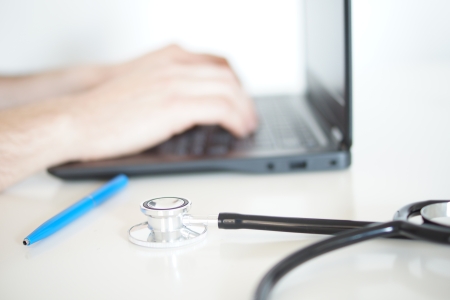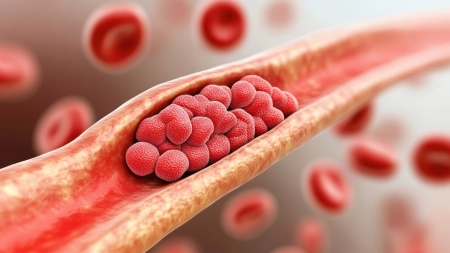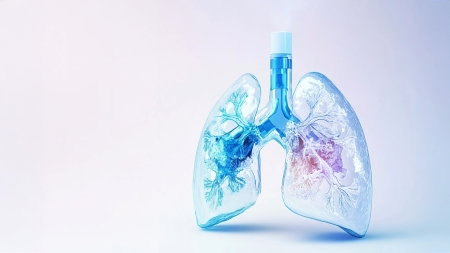Telemonitoring in heart failure: high-tech is pointless without high-touch
A Medinside article cites preconceptions about telemedicine. The basis for this is a research study on the link between participation in a telemonitoring programme for heart failure and the uptake of health care services.

What is the issue?
A number of cardiovascular diseases lead to heart failure, meaning that the chambers of the heart have difficulty in pumping blood around the body. A weakened and congested heart causes fluid to accumulate in the body, often in the legs and especially in the lungs. Patients increasingly experience shortness of breath, first during exertion, then also at rest: the heart fails, one suffocates on one’s own fluid. Heart failure is one of the most common causes of death in Switzerland.
How can it be treated?
The first thing to do is to treat the underlying cause of the heart disease and to strengthen the heart’s ability to pump blood using medication. The fluid that accumulates in the body and lungs needs to be excreted by taking diuretics.
Doctors have various ways of assessing whether the heart condition is stable or increasing, and then adjusting the dosage of medication: Fluid retention and shortness of breath, lung auscultation, taking X-rays and ultrasounds, blood tests.
Simple, yet tried and tested
For centuries, and despite all of our modern diagnostic equipment, medicine has had a simple way of measuring fluid retention, often long before a patient starts to feel short of breath: the bathroom scales. To put it another way: low-tech is the tool of choice.
What is telemonitoring?
The regular measurement of medical values is referred to as monitoring. Taking measurements remotely using medical instruments is therefore called telemonitoring. The dosage of medication is adjusted depending on how the patient’s weight develops. Patients themselves, their relatives or caregivers can check their daily weight on the scales. These diuretic adjustments can be done on site by a trained professional or over the phone by a specialist.
In other words, a professionally qualified caregiver means high-touch.
Telemedicine uses remote monitoring devices that allow the digital exchange of readings via the internet (radio scales, blood pressure, oxygen saturation, etc.).
This means that the humble bathroom scales are upgraded to a high-tech measuring device.
What is the subject of the research paper?
A large-scale and representative study of the “Association Between Participation in a Heart Failure Telemonitoring Program and Healthcare Utilization and Death within an Integrated Health Care Delivery System” was recently published in the Journal of Cardiac Failure. The study was conducted on patients in Kaiser Permanente’s integrated health care network in Northern California.
Why was the study carried out?
Monitoring heart failure has been demonstrated to reduce the number of hospital admissions and deaths. For practical and financial reasons, measurements are increasingly being taken remotely (telemonitoring). However, there are research findings that do not show any beneficial effects of telemonitoring on heart failure patients. Therefore, this raises the question as to what the reasons for this discrepancy are: Differences between the technology or measuring instruments used? Research methodology or patients’ commitment to the treatment? Lack of comparability in process integration? Given that large integrated care delivery systems are likely to have consistent policies regarding disease management, Kaiser Permanente would be a particularly good fit for this purpose.
What was the approach?
Heart failure patients were studied after a stay in hospital. One third of the participants in the study were provided with a free telemonitoring set consisting of wireless weighing scales, an oxygen saturation sensor, an electronic blood pressure cuff, and a tablet computer. The patients, who were on average 75 years old, were asked to complete a questionnaire on a tablet PC every morning when they got up and they also had to connect the measuring devices. The data was submitted online to health professionals who had to adjust the dosage of medication based on standardised treatment protocols (NLP algorithms). Additional interventions or home visits were the exception.
To put it another way: high-touch was replaced by high-tech.
What were the findings?
Although the patients in the telemonitoring group experienced more frequent dosage adjustments, there were neither fewer hospital admissions nor fewer deaths compared to the control group.
What is the positive side?
Medinside’s headline “Remote monitoring has not prevented hospital admissions” confirms the old journalistic credo: “only bad news is good news”. Let’s remind ourselves: There was a ban on remote treatment until recently because the argument that remote treatment was dangerous had been repeated like a mantra for decades. That is why the following headline would be more appropriate: “There are no disadvantages to remote monitoring”.
Wouldn’t it also be scoop-worthy that actual 75-year-olds are taking part in something like this? What about the increased quality of life and autonomy for patients in being able to stay at home? Have there been any added qualitative and non-financial benefits from telemedicine/telemonitoring? The study does not give any answers to these questions, nor to those concerning improved efficiency or financial savings. That is why it would have been worth reading the original article carefully.
What are the questions raised by this study?
It is to the author’s credit that he addresses the aspects that were missed out on:
Home visits by health professionals (GPs, Spitex, etc.) were only carried out in exceptional cases, i.e. “touch” was not part of the telemonitoring intervention programme. Patients received no instructions on systematic self-treatment or other ways of promoting patients’ commitment to treatment, lifestyle changes, or on how to recognise symptoms early and how to manage fluids.
In the event that, in exceptional cases and on a selective basis, key activities like this were carried out, they were neither recorded nor measured. Neither Patient Reported Outcome Measurements (PROM) nor Clinician Reported Outcome Measurements (CROM) were taken. Neither was it recorded whether and how the practitioners of both study groups (with or without telemonitoring) were in individual contact with the patients – or had any additional therapeutic interaction that deviated from the predefined protocols.
This could have been used to deduce the amount of low or high touch that would have been desirable. It might have been possible to determine objectively whether, despite the tech-heavy design of the study, touch was nevertheless provided by the health professionals involved? It might also have provided some clues as to what combination of low-touch and high-tech would be meaningful. Or better still: what is the most effective combination of touch and tech?
It appears that a commercial telemonitoring provider has made its equipment available free of charge, with the at-home care of heart failure patients reduced to a no-touch interaction with the tablet to test machine (natural language processing) treatment algorithms. Consequently, recruiting from within an integrated care network with a strong focus on multidisciplinary and interprofessional treatment concepts seems paradoxical. Even less comprehensible is the fact that neither the effectiveness nor the costs of the telemonitoring intervention were recorded.
My questions would have been: might it be that the isolated use of high-tech is not a fully adequate substitute for high-touch? Has the effectiveness of low-tech been underestimated? What do we know about the effectiveness of high-touch? How little low-touch is justifiable?
Or is it only the purposeful combination of analogue qualities (touch) with digital precision and security (tech) that produces effective and sustainable added value?
My commentary
The clarification of the telemonitoring bias was overlooked: The question why there are striking differences between various telemonitoring studies was not investigated by this study nor can it be answered on the basis of the study design selected. However, what became apparent was this: Isolated technical solutions instead of consistent and integrated treatment processes are unlikely to provide relevant added value.
High-tech alone without high-touch is a no-go.
For heart failure, the following applies: High-tech makes sense at the hospital. Regarding the fact that high-tech at home as an isolated measure prevents neither new hospital admissions nor deaths, I agree with the Medinside article on this point. But what I do not agree with is this: Telemedicine and telemonitoring cannot be relegated to high-tech only. Telemedicine is still medicine. Successful and sustainable medical practice has always been a combination of technical tools and interpersonal communication.
Small but subtly integrated low-tech solutions may frequently be the more appropriate solution, as in our example of the bathroom scales. Low-tech also means a low-threshold approach and consequently better accessibility to digital support. Why throw the baby out with the bathwater, i.e. no interaction with health professionals? Why do we need to enter measurement data exclusively via a tablet rather than a solution that responds to individual patients in a contextual and situation-based manner? Effective flexibility means a combination of automatic data collection (telemonitoring), but also a call by a professional trained in telemedicine, in addition to collecting data over the phone or video call, or even a home visit, when valuable diagnostic and therapeutic tasks are carried out simultaneously and instructions are provided to the patient on how to manage the condition themselves.
Interpersonal support via touch on the first and last stage of illness (professionals, home visits) can be physical or virtual depending on the context, must always be face to face and should, of course, be capable of being extended by digital technologies at any time. This is because chronically ill and elderly people prefer to live at home with decentralised services (food, household services), integrated within their social environment and support networks. They prefer to live an independent life in their familiar surroundings with a better quality of life and prefer to forego nursing homes and hospitals for a few years..
Outpatients with chronic conditions therefore need integrated treatment concepts that combine the best of both worlds at home. Integrated digital and analogue care: holistic hybrid solutions thanks to a blend of high-tech and low-tech. Bill Clinton is not the youngest anymore either. He had made history with his quote: “It’s the economy, stupid”. Who knows, perhaps one day in his old age he will also comment on his health care in the same way: “it’s the mix of tech and touch, stupid”?


